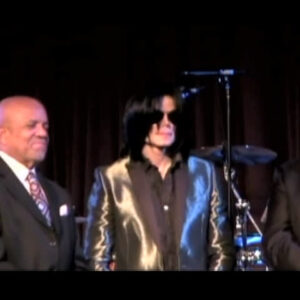Introduction
Aretha Franklin stands as an unparalleled figure in music, a soul-stirring voice whose influence reaches beyond genre boundaries and cultural barriers. Her contributions to music—particularly soul, gospel, and rhythm and blues—are legendary, earning her the title “Queen of Soul.” Yet, her legacy goes deeper than mere titles or accolades. Understanding the technical and creative challenges she faced throughout her career adds nuance to her enduring influence. From the limitations of early recording technology to the battles she faced as a Black woman in a male-dominated industry, Aretha’s journey was marked by obstacles that only a true pioneer could navigate.
This article delves into the technical, creative, and cultural challenges Franklin encountered as she forged her legendary path, uncovering how her struggles and triumphs contributed to her artistry and timeless appeal. Examining her work in the studio—her partnership with producers, her tenacity in the face of adversity, and her steadfast commitment to her creative vision—highlights a remarkable narrative of resilience, innovation, and uncompromising artistry.
Technical Challenges
Early Recording Technology Limitations
Aretha Franklin’s early recordings happened during a transitional period in the music industry. The technology available in the 1960s and early 1970s lacked the sophistication of today’s advanced audio engineering equipment. Multi-track recording, still in its infancy, allowed for only a limited number of tracks to be laid down, making it challenging to isolate each sound without muddling the final mix. When recording her powerful and varied vocal tones, the limitations became apparent. Engineers had to maximize the equipment to handle her dynamic range, balancing each note without losing depth or resonance.
Additionally, recording studios at the time often lacked the flexibility to fully capture the “live” sound Franklin wanted to convey. Microphones couldn’t fully encapsulate her vibrant highs or rich lows, leading to the necessity of careful placements and adaptations. As her voice boomed through rudimentary technology, the team had to work strategically to avoid distortion or loss of quality.
Microphone and Acoustics
Aretha’s voice was a force of nature, dynamic and almost impossible to contain within the bounds of standard microphones. Studio engineers worked extensively with different microphone placements and experimented with room acoustics to capture her voice’s power without overwhelming the equipment. The subtle nuances, such as her breath control and phrasing, required the precision of advanced tools, which were only just emerging in the industry. For example, her sessions at Atlantic Records famously used a mix of condenser microphones to enhance both her strength and the emotional delicacy she could evoke.
Rooms were often adjusted to suit her vocal delivery, creating an organic sound that was unusual for its time. As Franklin’s sessions leaned heavily on achieving the right acoustic atmosphere, the process was often experimental, pushing the bounds of traditional studio engineering to accommodate her artistry.
Mixing and Mastering
Mixing Aretha Franklin’s music required finesse. Her voice—typically the centerpiece of each song—demanded a balance that would let it shine above the instrumental arrangements without overshadowing them. The genre-defining sound she developed straddled gospel and soul, each requiring different approaches in the mix. Producers at Atlantic, including Jerry Wexler and Tom Dowd, worked meticulously to layer Aretha’s vocals with piano, bass, and brass, which were all integral to her powerful performances.
In addition, mastering was crucial to ensure her music sounded cohesive and impactful, especially on vinyl records. The limitations of vinyl meant that the engineers had to carefully manage the balance between her vocals and instruments, so the record wouldn’t skip or lose clarity on lower-quality players. Their careful attention to detail in the studio allowed her voice to maintain its soulful resonance across any platform, from radio to record players in listeners’ homes.
Creative Challenges
Capturing Raw Emotion
Aretha Franklin’s strength lay in her ability to deliver raw emotion with every note. Producers recognized early on that preserving this quality was essential to her authenticity as an artist. Songs like “I Never Loved a Man (The Way I Love You)” and “Respect” demanded that Aretha pour herself into each performance. Capturing this level of emotional intensity on record was no small feat, and it often meant stripping down the production to let her voice carry the song.
Producers strove to avoid over-polishing her recordings, fearing that too much refinement could dilute the genuine emotion she channeled. This approach often involved fewer takes, allowing for the spontaneity and realness she brought to every recording. While the industry standard at the time may have favored a more “polished” sound, Aretha and her team saw the value in retaining that rawness, creating a sound that transcended trends and connected directly with listeners.
Finding the Right Arrangement
Aretha Franklin’s gospel roots were deeply woven into her musical identity, but she also aimed to innovate within the growing soul genre. Bridging the two was a delicate process, especially when traditional gospel rhythms clashed with the structured beat of popular music. The challenge lay in finding an arrangement that maintained the spiritual fervor of gospel while introducing the irresistible rhythm of soul.
Sessions were marked by experimentation, and Aretha often took a hands-on approach, reimagining songs in real time. Her early work with the Muscle Shoals Rhythm Section in Alabama exemplified this, as her improvisations and rearrangements transformed songs in unexpected ways. The recording of “Respect” is a famous example of this process: Aretha took an Otis Redding song and reinterpreted it, injecting her own perspective and rhythmic intricacies, making it entirely her own.
Studio Dynamics
Aretha Franklin held a rare command over the studio environment. Unlike many artists of her time, she didn’t shy away from taking the lead in shaping the final sound. Her improvisations and instinctual changes added a complexity that her producers embraced, though it often meant extended studio hours and a constant need for adaptation. Aretha’s assertiveness as a female artist was groundbreaking, and she worked with her team as a true collaborator rather than a passive performer.
This unique dynamic occasionally created tension, but it ultimately shaped her work’s originality. Aretha’s studio sessions were filled with spontaneous changes to melody, rhythm, and phrasing, keeping her producers and fellow musicians on their toes. Her ability to listen to a track and instinctively know what it needed—from a tempo shift to a complete overhaul of the arrangement—showcases her unparalleled musical intuition.
Cultural and Industry Obstacles
Gender and Race Biases in the Music Industry
The music industry in the 1960s was largely controlled by white, male executives, creating significant hurdles for a Black woman from Detroit who wanted artistic freedom. Despite her talent, Aretha faced numerous barriers that restricted her access to the best studios, resources, and promotional efforts that white artists received. Her rise to success was a testament to her resilience, and while she did secure opportunities to record at prestigious labels like Atlantic Records, the road was far from easy.
The dual challenges of race and gender also meant that she had to fight for recognition and autonomy in her work. She faced limitations on the types of projects she could take on and often dealt with prejudices from those who underestimated her capabilities. Yet Aretha defied expectations, pushing through these biases with undeniable talent and an uncompromising vision for her music.
Balancing Creative Freedom with Commercial Demands
As Aretha’s career grew, so did the pressures to conform to commercial expectations. Record labels were eager to capitalize on her success but often pushed for a more mainstream sound that could maximize sales. This tension between creative freedom and commercial viability presented a continual challenge. Aretha had to assert herself repeatedly, working to ensure that her music stayed true to her roots even as she gained broader popularity.
Songs like “Chain of Fools” and “(You Make Me Feel Like) A Natural Woman” showcase her ability to retain her gospel and soul foundation, even while recording for a wider audience. She balanced her artistic integrity with the reality of the commercial industry, proving that it was possible to achieve both critical acclaim and commercial success.
Conclusion
The obstacles Aretha Franklin faced in the studio—technical, creative, and cultural—only deepened the significance of her music. Each struggle added layers to her legacy, transforming what might have been a typical recording session into a testament to innovation and resilience. Her ability to push boundaries and stay true to her roots forged a legacy that continues to inspire artists to this day. The way Aretha approached her craft, combined with her commitment to authenticity, turned every song into an anthem of empowerment and resilience.
Aretha Franklin’s life was marked by a continual push against limitations, and her music serves as a reminder that greatness often arises from adversity. Her journey through the technical constraints of early recording, the creative risks in finding her sound, and the biases of an industry reluctant to embrace her fully exemplifies the power of persistence. In understanding these challenges, we come to appreciate not only Aretha Franklin’s artistry but also her unyielding spirit—a legacy that will undoubtedly influence generations of musicians for years to come.





